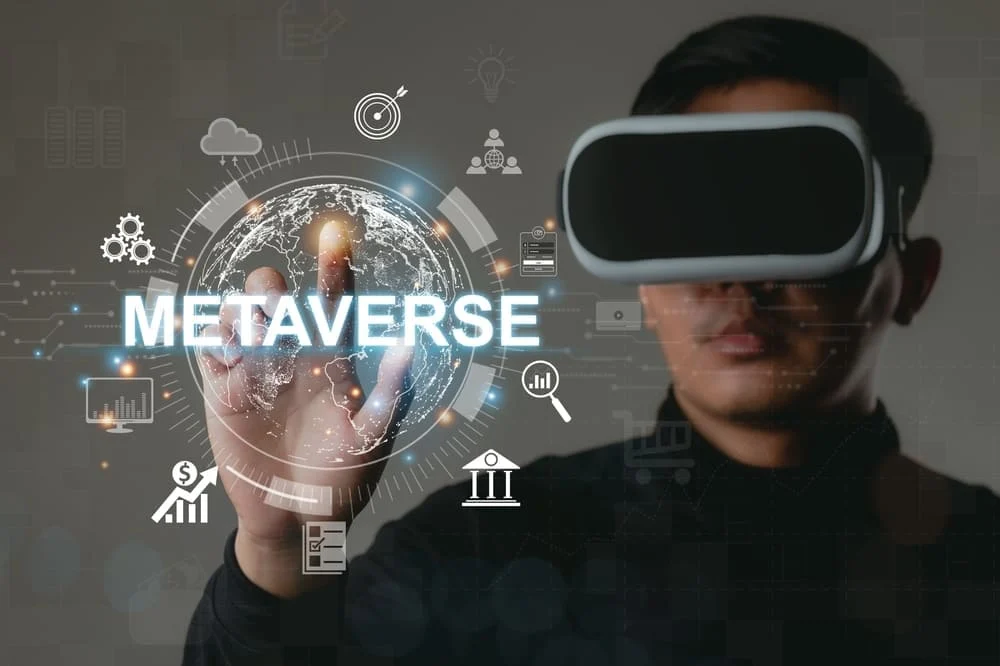
The concept of the metaverse has captured the imagination of technologists, futurists, and the general public alike, promising a future where virtual worlds seamlessly blend with our physical reality. As an interconnected network of 3D virtual spaces, the metaverse is envisioned as a digital universe where people can interact, socialize, work, and play in ways that are not bound by the limitations of the physical world. With advancements in virtual reality (VR), augmented reality (AR), and blockchain technology, the metaverse is rapidly becoming more than just a futuristic idea it is shaping up to be the next frontier of digital interaction.
What is the Metaverse?
The metaverse is a collective virtual shared space, created by the convergence of virtually enhanced physical reality and physically persistent virtual reality. In simpler terms, it is an expansive digital environment where users can create avatars to represent themselves and interact with others in real-time. Unlike traditional online platforms, the metaverse is designed to be immersive, persistent, and interconnected, offering experiences that go beyond mere screen-based interactions.
One of the core features of the metaverse is its ability to offer a sense of presence. Through VR and AR technologies, users can feel as though they are actually “present” in a virtual space, whether it’s attending a virtual concert, meeting friends in a digital cafe, or collaborating on a work project in a virtual office. This level of immersion is what sets the metaverse apart from current digital platforms and has the potential to redefine how we interact with digital content.
The Building Blocks of the Metaverse
Several technologies are driving the development of the metaverse, each playing a crucial role in creating the immersive experiences that define this new digital frontier.
- Virtual Reality (VR) and Augmented Reality (AR): VR and AR are at the heart of the metaverse experience. VR provides a fully immersive environment where users can interact with a completely virtual world, while AR overlays digital information onto the physical world, enhancing real-world interactions. Together, these technologies enable users to experience the metaverse in a way that feels natural and engaging.
- Blockchain and NFTs: The metaverse is also closely linked to blockchain technology, particularly in the form of non-fungible tokens (NFTs). NFTs provide a way to establish ownership of digital assets within the metaverse, from virtual real estate to digital art. This decentralized approach to ownership and commerce is expected to play a significant role in the metaverse economy, allowing users to buy, sell, and trade assets securely.
- Artificial Intelligence (AI): AI is another critical component, powering the intelligent avatars, virtual assistants, and dynamic environments that populate the metaverse. AI-driven systems can create realistic interactions, simulate complex scenarios, and provide personalized experiences for users, making the metaverse a more vibrant and responsive space.
The Future of Social Interaction and Work
As the metaverse evolves, it has the potential to revolutionize how we socialize, work, and entertain ourselves. In the realm of social interaction, the metaverse offers a new way to connect with others, transcending geographical boundaries and physical limitations. Virtual gatherings, events, and communities can flourish in the metaverse, providing a sense of belonging and shared experience that rivals, or even surpasses, what is possible in the physical world.
For the workplace, the metaverse could redefine remote work by offering virtual offices where employees can collaborate in a more immersive and interactive environment. Imagine attending meetings in a virtual conference room, brainstorming ideas on a digital whiteboard, or even designing products in a 3D space all from the comfort of your home. This level of interaction could enhance productivity and creativity, making remote work more effective and engaging.
Challenges and Ethical Considerations
While the potential of the metaverse is vast, there are significant challenges and ethical considerations that must be addressed. Privacy concerns, data security, and the potential for digital addiction are just a few of the issues that need to be carefully managed as the metaverse continues to develop. Additionally, ensuring that the metaverse is inclusive and accessible to all users, regardless of their background or location, will be crucial in preventing a digital divide.
The metaverse represents a bold new vision for the future of virtual worlds and digital interaction. As technology continues to advance, the line between the physical and digital realms will blur, creating new opportunities for connection, creativity, and commerce. However, realizing the full potential of the metaverse will require careful consideration of the challenges it presents, ensuring that this new digital frontier is built on principles of inclusivity, security, and ethical responsibility.
Simplify Your Digital Tasks
SitelinkPro is a versatile digital tool that streamlines your online tasks. Easily convert PNG images to JPG, remove image backgrounds, and look up words with its english dictionary. With SitelinkPro, everything you need is conveniently available in one platform, making your workflow faster and more efficient.



